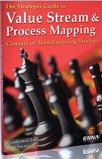Action Learning, Kaizen & Lean
 Given
wide range of practices, it can appear that Action Learning is little
different from Kaizen Events or even ordinary task forces.
The differences can be subtle but important. All three approaches can (usually) solve the
assigned problem. However, the longer range, strategic effects are radically different. Table 1
summarizes the commonalities and differences. Given
wide range of practices, it can appear that Action Learning is little
different from Kaizen Events or even ordinary task forces.
The differences can be subtle but important. All three approaches can (usually) solve the
assigned problem. However, the longer range, strategic effects are radically different. Table 1
summarizes the commonalities and differences.
A task force may find a solution to the problem but the
implementation is usually slow, painful and uncertain. When complete, the organization reverts
to its normal modes of operation.
A typical Kaizen Event solves the problem and implementation
is swift and sure. However, outside the immediate area that the
problem has addressed, the organization reverts to its normal operating modes.
Because the culture has not changed, the benefits of the Kaizen Event may be slowly undone over
time. Action Learning emphasizes the extension of learning to others in the organization.
In Action Learning the facilitator's role
is less dominant than in a typical Kaizen Event. In the Kaizen Event (or Blitz) the
pressure of time forces facilitators to make many decisions about scope and scheduling. The
facilitator also exerts heavier influence on specific decisions rather than discussing the issues
for hours or days. In Action Learning, the group struggles more but learns more.
|
In Kaizen, the pressure of time gets fast results and forces people to give up dysfunctional
mental models. However, it affects only the people directly involved and only with respect to
the specific problem. Participants do not learn how to learn. They do not recognize that other
mental models might also be dysfunctional. They rarely carry their new learning into dissimilar
areas or use it to deal with dissimilar problems.
Summary of Action Learning
By constantly interweaving learning and reflection, Action
Learning increases discernment and brings deeper understanding among the participants.
People go beyond their pre-programmed assumptions and mental models.
These increased abilities do not just affect the Action Learning group. Participants carry
these new abilities to other parts of the organization and begin to influence the thinking and
thinking abilities of many others. The quality of thinking, problem solving and decision-making
rises throughout the organization, at many levels and in many diverse situations.
The result is cultural change.

|





